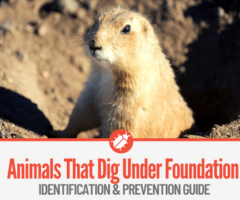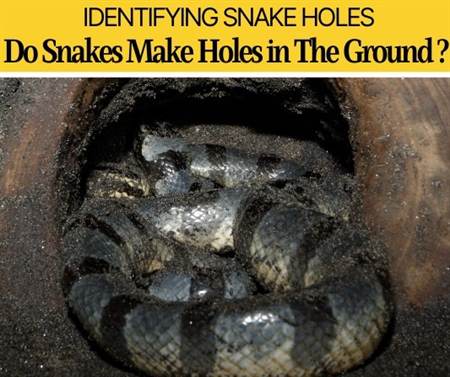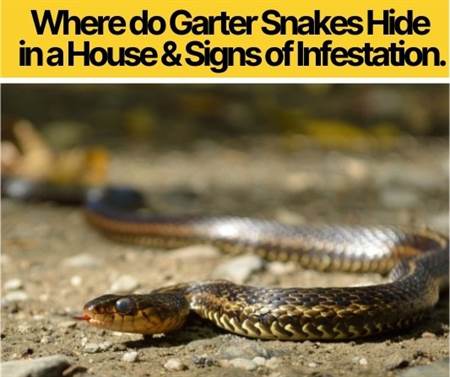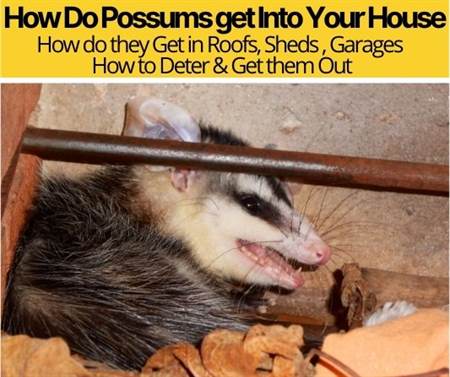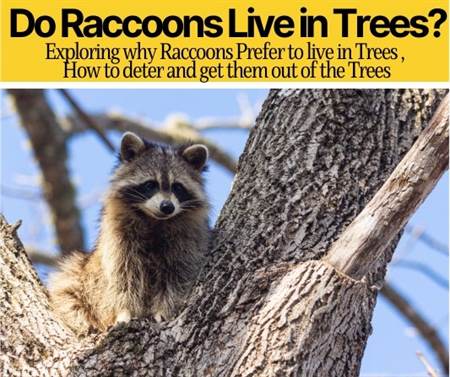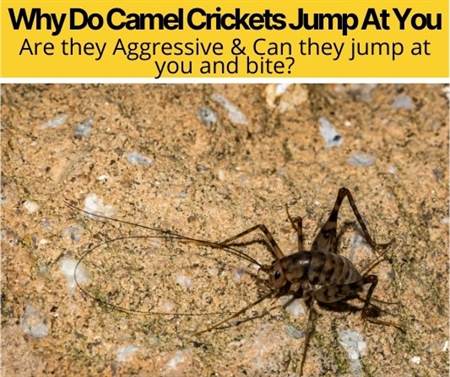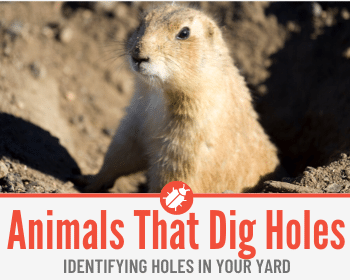 Do you Keep Finding holes in Your Yard? Wondering who is causing all this damage to Your Yard?
Do you Keep Finding holes in Your Yard? Wondering who is causing all this damage to Your Yard?
In this guide you will learn:
- Which animals Dig Small holes & which animals Dig large holes,
- Which Animals can burrow and dig tunnels in your yard,
- How to Identify the Holes or Tunnels of each Animal,
- How to Prevent different Animals Digging holes in your Yard.
This article will outline each different animal and their reason for digging holes and damaging your yard. Also how to identify if your yard is infested, as well as how to prevent them from digging holes and destroying your yard.
Animals that Dig Holes in Yards:
- Moles
- Groundhogs
- Skunks
- Voles
- Rabbits
- Gophers
- Ground Squirrels
- Rats
- Chipmunks
- Foxes
- Raccoons
- Prairie Dogs
- Earthworms
Moles
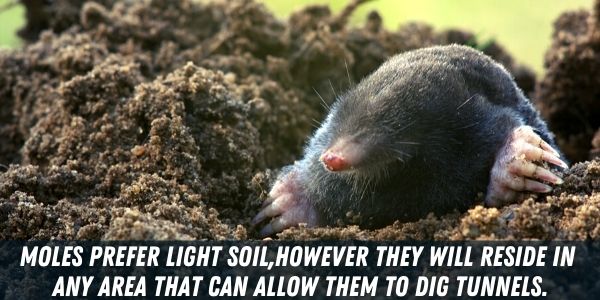
- Small body, eyes, and tail,
- Velvet black fur, fong pink nose,
- Known to have “digging hands” as they have two large front paws,
The velvety fur gives the mole an advantage to move through the dirt and dig holes and tunnels easily. Mole’s face, especially mouth and nose, are protected by any dirt flying around within the tunnel due to their face pointing downwards.
Moles live in various areas but mostly reside in any area that can allow them to dig tunnels.
Mole Digging Behavior
- They are active day and night taking four-hour shifts, alternating between digging and sleeping.
- Moles require to replenish half of their body weight, in just a day, which is why they can reach up to 20 feet digging per hour to reach this goal.
- When food is scarce, they are known to dig surface holes in hopes of trapping their next meal.
- They are known to damage structures by using these said structures as a guide while they are digging, due to many insects hiding in the cool soil.
- Moles prefer the soil to be soft so seeing mole activity and holes done by moles after rain or watering is very common.
- It is rare to see a mole, you have a better chance to spot mole hills, also called mounds.
Identifying Mole Holes & Infestation
While it may be hard to physically see a mole due to them staying underground, the damage they leave is quite visible. So how do you know you are being infested by moles?
- Very fresh “earth” mound left in a pile near raised ground.
- Raised, uneven ground near gardens, buildings, and even near trees.
- Mole runs, which are raised tunnels that all connect, usually in shaded areas on the lawn.
Preventing Moles and keeping them from Digging Holes
It is common for people to think mole prevention is just stomping their tunnels, but due to moles being professional diggers they do not mind digging those holes again.
Mole prevention can be super easy, if you take the right steps. Follow this guideline to help find the best prevention for your lawn!
- Natural plants such as marigolds disrupt the moles’ sensitive nose, planting these around will not only have your flower bed looking great, but also keep moles far away from digging holes in your yard.
- As moles prefer soft, moist soil; it could help if you water your garden less.
- Professional help can solve your mole and their hole problem if you feel it has gotten out of hand.
Groundhogs
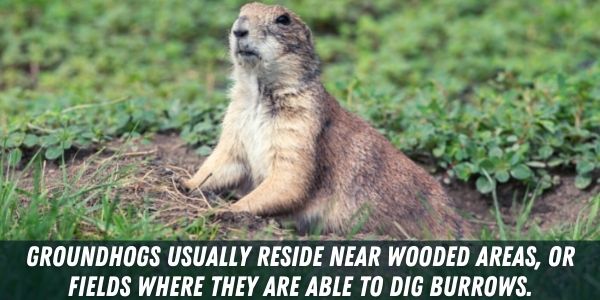
Also known as whistlehogs or woodchucks, or our spring radar!
- Brindle brownish-greyish fur,
- Small chunky body, with a short tail,
- Front feet have large claws,
On average groundhogs are about 2 feet long, from their head to their tail. They walk on all four feet, but are known to commonly stand to check an area out.
Groundhogs are common throughout the United States, especially north america and even Canada. They usually reside near wooded areas, or fields where they are able to dig burrows.
Groundhog Digging & Burrowing Behavior
- Groundhogs are active mostly during daylight hours, where they are commonly known to feed in the early morning.
- They are herbivores, which is why it is very common for Groundhogs to burrow and make holes near gardens in search of food.
- They can dig burrows that reach up to 20 feet wide and 6 feet deep depending on the soil type.
- They are known to dig under buildings, and even chew through electrical wires underground.
- They can create intricate tunnels that can lead to various food sources, sometimes connecting garden to garden underground through lawns, and then back home to their den.
Identifying Groundhog Holes & Infestation
With large holes and long tunnels all around the yard, how can you be sure it is a groundhog when so many other animals leave the same result? A few things to look out for are:
- Tunnel openings through the yard with small mounds of dirt surrounding.
- Bites taken out of crops, as well as plant roots being revealed.
- Damage to ornamental plants from clawing and scent marking.
Preventing Groundhogs and keeping them from Digging Holes
While most larger crop companies use explosives to remove groundhogs and prevent digging holes, this method is not recommended for lawn use.
Groundhog prevention can be humane if you take the right steps. Follow this guideline to help find the best prevention for your lawn!
- Bait, trap and release the groundhog. Using a humane animal trap can allow you to safely release the groundhog to a better location.
- Burrowing animals dislike vibrations, buying a machine to create vibrations can and will deter groundhogs from tunnelling and making holes in your yard.
- Contact professional wildlife help, this could save you time and money if the problem is too much to handle.
Skunks
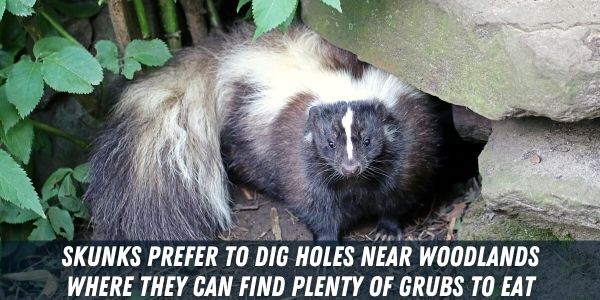
- Fluffy black and white fur, usually striped,
- Long, tall tail, usually very bushy,
- Smaller size, usually 2-3 feet,
While most people can easily recognize a skunk just by their colors, they can also be known by their smell, which is a strong reminiscent smell of rotten eggs that can last days.
Skunks are found just about everywhere in the United States, excluding certain parts of the desert in Nevada and Utah. They prefer to be near woodlands but will reside in abandoned buildings.
Skunk Digging Behavior
- Normally skunks move around at night and consistently dig holes in grassy areas such as lawns.
- Skunks are also known to dig 3-4 inch holes in search of grubs, these will be holes that are just under the surface.
- Skunks tend to keep their home den, which is about 2 feet deep, close to buildings such as homes.
- Skunk digging activity increases in the spring due to needing more energy as well as food for young.
Identifying Skunk Holes & Infestation
So now that you know skunks can be the main suspect in leaving holes in your lawn, how can you be totally sure? Here are tips to follow while making this decision:
- Finding various small holes that stop just below the surface, near a larger hole.
- A distinctive smell coming from the direction of the hole, skunks sometimes spray near their den as a warning to other animals.
- Finding tracks and skunk waste around the yard, skunks lay their waste nearby so seeing these can indicate an infestation.
Preventing Skunks and keeping them from Digging Holes
Skunks can easily tear up a yard and create large holes in search of food, but there are easy ways to remove these animals from your lawn.
Skunk prevention can be quick, if you take the right steps. Follow this guideline to help find the best prevention for your lawn!
- Skunks are very aware animals, meaning if you use scare tactics, such as scarecrows, they will recognize danger and leave. This will result in an unbothered lawn.
- Smells such as predator urine will help deter the skunk from your lawn, as they will think something larger is preying around.
- Using nematodes can help lower your grub problem, which is why skunks are digging holes in your yard to begin with.
Voles
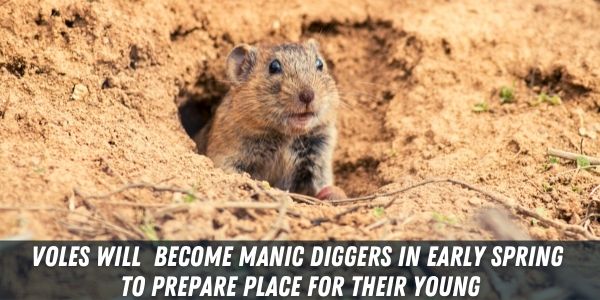
Also known as a meadow mouse.
- A Vole has a very round body and ears,
- Their fur varies between chestnut brown, reddish, or even gray underscale.
- They have stocky bodies with extremely short tails.
Voles can reach up to 8 inches long, and yes most Voles look like common mice, but Voles have smaller ears and eyes and have rounder faces. They also have shorter tails than mice.
Meadow vole has the largest geographic distribution of any species in North America. The range voles have extended through almost all of the United States, excluding certain parts of Alaska. They will be usually be found in grassland, gardens and meadows.
Vole Digging & Burrowing Behavior
- Voles are active day and night, all year round.
- Voles are likely to burrow and make holes mostly during the Winter in order to stay warm, they line their tunnels with greens, which could help fertilize gardens.
- Voles are especially manic diggers in the early springtime due to preparing for young.
- Though you can see voles moving around, they spend most of their time in their burrows.
- Their burrows will vary in size due to how many colonies live within it. This all determines how much food supply is nearby.
Identifying Vole Holes & Infestation
Voles are very small creatures so identifying their damage may seem harder, while they don’t leave mounds behind, like any burrowing animal they do leave evidence.
- Voles dig many short, small holes & burrows and fill them with grass, stems, and even leaves.
- Aboveground runways, like highways, that connect to different burrows. These runways will have decompressed grass that is brown and flattened.
- Gnawing on vegetation, whether it is the food or the stem.
Preventing Voles and keeping them from Digging Holes
While voles are quite small and prevention seems useless, there are many ways you could help your vegetation and lawn avoid these small guys!
Vole prevention can be easy, if you take the right steps. Follow this guideline to help find the best prevention for your lawn!
- Remove dense vegetation, like weeds. This provides a safe area for them, so keeping it short will make them find a better, safer spot to dig holes and make burrows.
- Keep the entire lawn mowed regularly to avoid them moving spot to spot, as they dislike being seen.
- Using repellent such as animal urine or even certain plant foods can help deter voles.
Rabbits
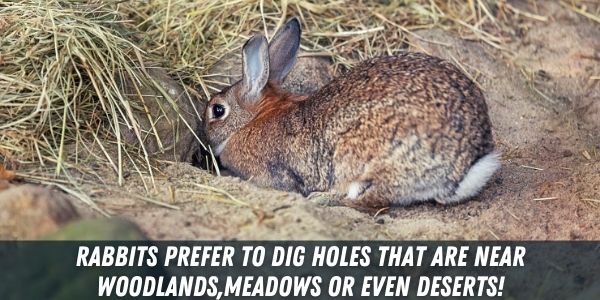
- Wild rabbits usually have greyish-brown fur
- They will have a short tail, with white underparts
- Will always have two large, tall floppy ears.
Wild rabbits are not to be confused with domesticated rabbits, wild rabbits will be scared of humans, resulting in them fleeing.
Rabbits are naturally found roaming wild in the United States, Europe, and even Australia. They prefer areas that are near woodlands, meadows, and even deserts.
Rabbit Digging Behavior
- Rabbits usually are known to dig holes so they can create dens, which are secluded places they can hide from predators and even give birth in.
- Rabbits will rarely ever leave their makeshift dens during the daylight, they invade gardens during the night.
- Rabbits create dens in unkept yards, ones with high bushes and wooded areas.
Identifying Rabbit Holes & Infestation
While rabbits are cute, loveable creatures, if they are left unbothered in your yard, they can reproduce quickly and invade your garden until there is nothing left to eat. Here are a few things to look out for in determining if you are being infested by rabbits:
- Check the stems and leaves of your attacked plant for clean cut damage at ground level from their sharp teeth, but will only attack seedling plants, when plants grow above this point they are safe from damage.
- Bites out of food in your garden, as well as flowers being devoured.
- Small burrows near wooded areas, which range about 3 feet deep to a 1 foot wide entrance.
Preventing Rabbits and keeping them from Digging Holes
Rabbits are very quick creatures where prevention can be necessary as they can devour an entire garden within a few days depending on the colony size.
Rabbit prevention can be quick, if you take the right steps. Follow this guideline to help find the best prevention for your lawn!
- With rabbits being great sniffers, using odor to deter them from making holes and dens is a great idea. Odors like onion, garlic, and even talcum powder can help deter rabbits from your garden.
- Bait, trap, release. It is best, and most safe to remove rabbits by baiting them, trapping them, and releasing them to a better alternative location.
- You can use fences to avoid rabbits in your yard, it’s best to put some chicken wire fence under the main fence to avoid digging under.
Gophers
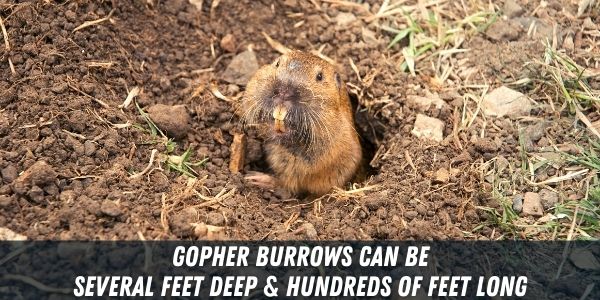
Also known as Pocket Gophers
- Gophers have small bodies, legs, and head,
- Their fur consist of black-brownish pale,
- They have long forearms and sharp claws,
Gophers are small mammals that range from 9-18 inches from head to the tail. They look like smaller groundhogs, but can produce the same damage, if not more.
Gophers live throughout North America and Central America, but they prefer any areas with loose soil. Those can include woodlands, grass prairies, and even mountain ranges.
Gopher Digging & Burrowing Behavior
- Gophers are mostly active all year round, but will show more hole digging activity in the spring-fall when the soil is just right for digging.
- They live just below the surface in burrows that can be several feet deep and several hundred feet long
- The tunnels and holes that they dig interfere with many man-made systems and structures including dams, gardens, and even irrigation systems.
- Gophers can burrow and leave close to 70 mounds per month in soft, loose soil, but they will not be visible aboveground due to the deep range.
Identifying Gopher Holes & Infestation
- Gopher will leave damage to trees, plants, and even vegetation.
- As they burrow, they push earth debris to the surface, which leaves a fan-shaped mound directly near the hole.
- Gopher tunnels are extensively larger in diameter and way deeper than tunnels created by moles.
Preventing Gophers and keeping them from Digging Holes
If gophers are left rummaging around your yard and digging holes and burrows, it can cause major damage to structures due to their deep, intricate tunnels.
Gopher prevention can be quick, if you take the right steps. Follow this guideline to help find the best prevention for your lawn!
- Gopher traps can be used to trap the animal safely and move it to a safer location
- Non toxic gas can help knock the gophers unconscious as you move them.
- Natural repellents, such as coffee grounds or peppermint oil, can help deter gophers away from your yard.
Ground Squirrels
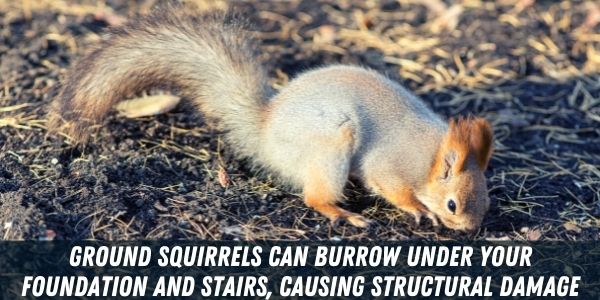
- Colours range from reddish, olive, grey, to very dark brown,
- Short legs with strong claws and body with small rounded ears,
- Moderately long tail,
Ground squirrels range from 9-18 cm and are one of the 62 species of squirrel throughout the world. Some will have a distinctive white streak on their back.
Ground Squirrels range from rocky mountains to dry deserts, but the most common yard ground squirrels reside all throughout the United States. They prefer rocky locations, sometimes grassy areas. They can be found in graveyards and even golf courses where they love to make holes!
Ground Squirrel Digging & Burrowing Behavior
- Squirrels create their nest, or dreys, from twigs, leaves with grass lining the insides. These nests will reside under buildings or near trees.
- Squirrels can have numerous dreys, one being used for birthing which will be a secure, hidden location in the ground. This could result in various holes all over the yard.
- They reside,make holes and burrow nearby food sources, so they can feed their young. This will mean your garden will be picked daily, especially during the nighttime.
- Ground squirrels do not typically enter homes, they may burrow under your foundation and stairs, causing structural damage.
Identifying Ground Squirrel Holes & Infestation
Squirrels can leave a homeowners yard distraught, especially during springtime when they are preparing for young. Here are few tips to confirm it is a ground squirrel digging holes:
- Ground squirrels are known to damage many plants, including vegetables, fruit trees, and even shrubs. Finding raised ground around trees and shrubs will indicate ground squirrels infestation.
- They are capable of digging holes and burrowing up to 4 feet deep, they have the ability to create several interconnected tunnels which can be seen above ground.
- Ground Squirrels are also known to chew on plastic water sprinkler heads.
Preventing Ground Squirrels and keeping them from Digging Holes
Just like rabbits, prevention of ground squirrels is 100% necessary if you’d like to avoid keeping them and making holes/burrows in your yard!
Ground Squirrel prevention can be easy, if you take the right steps. Follow this guideline to help find the best prevention for your lawn!
- Placing fences around your yard, as well as your garden can help prevent squirrels from finding a food source, which could prompt them into leaving as they prefer close food sources.
- Garden netting can also help protect your garden from these sneaky pests by cutting off access.
- Contact wildlife professionals if you feel the problem is past the point of prevention.
Rats
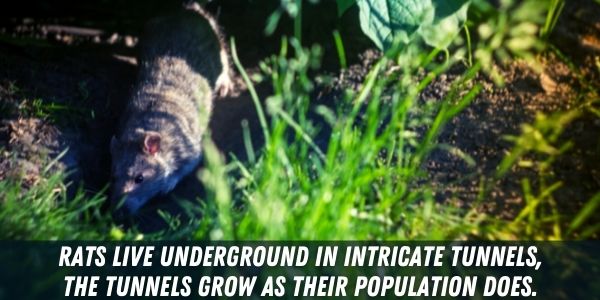
- Rats have a thin body with long legs as well as long, sharp claws,
- Their head is in a point shape and contains large eyes,
- Ears will appear almost bare, thin fur.
The common burrowing rat gets confused for meadow mice, or voles. The burrowing rat has a larger body, also the vole’s tail is quite shorter.
It is a fact that burrowing rats, or brown rats, now appear on every continent except Antarctica. They prefer to live wherever humans are present, this could include your yard.
Rat Digging & Tunneling Behavior
- Rats are nocturnal animals, so if you’d like to catch the rats in action coming in and out of the holes and burrows, it will have to be done at night.
- Rats create nests in places that provide them with sufficient food and shelter, meaning if you remove that food source they may leave and never dig another hole.
- Rats live underground in intricate tunnels, the tunnels grow as their population does. This could result in disaster.
- Rats are known to gnaw in order to keep their teeth sharp and trimmed, this could leave wires and even plumbing exposed.
Identifying Rat Holes & Infestation
- Finding rat droppings around your yard, or nearby holes that range in 2-4 inches in diameter
- Finding a hole with various man-made materials can indicate a rat infestation, these can include paper, cloth, cotton, debris and even twigs,
- Rats will kick dirt out from the burrow, so finding piles of earth outside the hole is common.
Preventing Rats and keeping them from Digging Holes
With rats being known to burrow and make holes deep within the ground under man-made structures, which could hold up to several colonies of rats. This weakens the structure and can result in disaster, prevention is the top tool in keeping these pests away.
Burrowing Rat prevention can be easy, if you take the right steps. Follow this guideline to help find the best prevention for your lawn!
- Rats stay near residential areas for food, removing that food source will prevent rats from staying.
- Using chicken wire near your garden, make sure to bury some of the fence underground deep enough to ensure the rats will not dig under.
- Bait, trap, release. Using this method will help you safely remove these animals.
Chipmunks
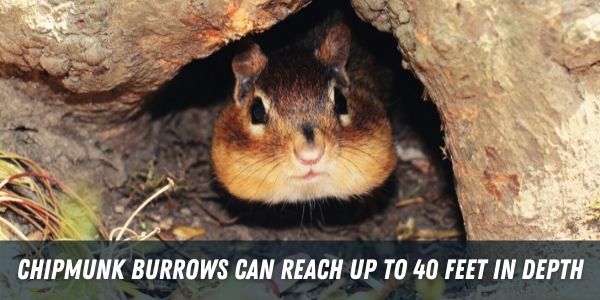
- Chipmunks have dense, reddish-brown short fur, with small bushy tails.
- Their body is quite small, chubby, and round.
- Their eye is surrounded by two white eyeliner streaks, above and below each eye.
Another way to recognize a chipmunk is that their back contains stripes that alternate between light and dark, this also applies to their cheeks. They will be about 6 inches long.
Chipmunks are found everywhere between Mexico and Canada, they will live in a variety of places, some including woodlands, deserts, and even homes. Their main concern is being close to food.
Chipmunk Digging & Burrowing Behavior
- Chipmunks are mostly active during very early mornings and late afternoons, so in your search finding them start at these times.
- They are known to dig very intricate holes and burrows that can reach up to 40 feet deep.
- The tunnels are rare to see due to the chipmunks carrying the debris inside their cheeks.
- Chipmunks do not hibernate, so if you are infested and allow them to stay, they will thrive in the winter months which could result in reproduction within the house during the spring.
Identifying Chipmunk Holes & Infestation
- When you have an infestation, you will hear scratching of the floorboards. As well as scurrying noises within the walls, ceilings, or under floorboards.
- Chipmunks will leave food trails, bite marks on vegetation, and even open food within cabinets if they are inside.
Preventing Chipmunks and keeping them from Digging Holes
Although these animals are very cute, they can leave homes needing critical help and should be avoided at all cost.
Chipmunk prevention can be easy, if you take the right steps. Follow this guideline to help find the best prevention for your lawn!
- Remove easy food sources such as bird feeders and open gardens. This will result in making it harder for chipmunks to get food and they may move on without tearing up your yard and digging holes.
- Using odors such as garlic, peppermint, and even citrus will help deter the chipmunks from infesting your home.
- Bait, trap, release. Baiting the chipmunks, with peanut butter or nuts, and rehome them to a better, safer location.
Foxes
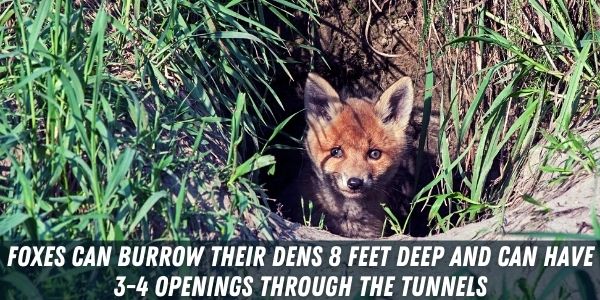
- Foxes have a thin body with a long snout,
- Their fur is red across the back, sides, tail, and face. While their throat, belly, chin, and even their tip of tail is white,
- Foxes also have black feet, as well as black-tipped ears that seem to be large and pointy.
Foxes are usually 15-20 pounds but can reach up to 30 pounds. They can move very swiftly throughout fields, and even foods.
Foxes are found from Europe to North America residing in woodlands, deserts, and even grasslands. They choose to stay close to fresh water and constant food.
Fox Digging & Burrowing Behavior
- Foxes are most active at dawn or dusk, they spend their days in their dens sleeping.
- Foxes dig burrows and burrow into dens within the ground, They provide a cool, shady place for them to sleep, store food, and even birth pups.
- Foxes can dig holes and burrow their dens 8 feet deep and can have 3-4 openings through the tunnels. Their tunnels can reach up to 75 feet long.
- They are known to dig at a 45 degree angle, which results in 8 inch holes.
Identifying Fox Holes & Infestation
- Identifying fox paw prints in the back yard will be one sure way to indicate a fox infestation.
- Foxes may attack pets, smaller livestock, and even devour vegetation as well as plants.
- Finding 8 inch holes all throughout the yard, with dirt surrounding them.
Preventing Foxes and keeping them from Digging Holes
Not only can foxes destroy yards and gardens, they can attack pets and livestock, so preventing these animals from getting into your yard is the first step.
Fox prevention can be easy, if you take the right steps. Follow this guideline to help find the best prevention for your lawn!
- Using odors like chilli and cayenne pepper and sprinkling them on bushes can help deter foxes away from gardens.
- Chicken Wire and large fences will help keep foxes out of the garden.Be sure to place garden nets above gardens to ensure no jumping in.
- Bait, trap, release. This method works best for larger animals and can help both you and the fox by releasing the fox into a more suitable habitat.
Raccoons
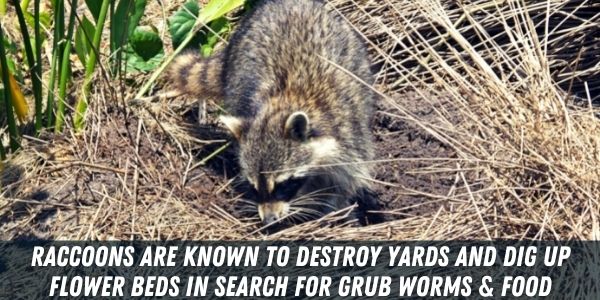
Also called the masked bandit
- Raccoons have dense, greyish brown fur that allows them to stay warm in colder weather.
- They have a bushy tail that contains 5 or 6 light and dark alternating rings,
- They often appear hunched when they are walking around but can stand on their hind legs,
Racoons are also recognized by the fur around their eyes. Their fur indicates a mask-like variation.
Raccoons are widely known animals in Canada and South America. Raccoons live in moist wooded areas that can allow them to have a source of water and food.
Raccoon Digging Behavior
- Raccoons are nocturnal, and can also be seen during daylight hours. They will do most of their hunting at night.
- These animals are omnivores which is why they reside so close to humans. They can invade houses in search of food
- They are known to destroy gardens by digging large holes, as well as flower beds.
- They also dig up grubs in the ground , which leave small, just below the surface, holes all through a yard.
Identifying Raccoon Holes & Infestation
- If the raccoons are infesting a home, the smell of feces and urine will get stronger by the day. These smells will come from the attic or basement. They reside in places where they will rarely interact with humans.
- Scratching and running noises in attic, walls, and even under floorboards can indicate a pest problem.
- Finding raccoon tracks around the yard, as well as claw marks at tree bases.
Preventing Raccoons and keeping them from Digging Holes
Raccoons can be a hassle to deal with especially when there is constant food around as they love to dig holes to search for grubs,take the steps beforehand to reduce any interaction with them.
Raccoon prevention can be easy, if you take the right steps. Follow this guideline to help find the best prevention for your lawn!
- Cut off food sources. Cleaning up, or moving trash cans can keep raccoons moving while they are in search of easy food.
- Use Raccoon Repellents like these to deter and keep raccoons away from your yard.
- Remove any nearby branches, or open access points into your house. Raccoons are great climbers and dont mind taking the trip.
- Bait, trap, release. Rehoming these guys is your best bet in removing them humanely.
Prairie Dogs
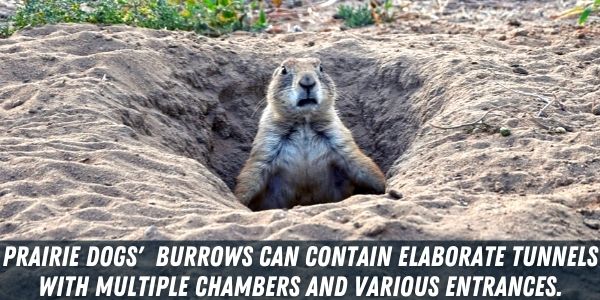
- Their bodies are round, but muscular with short legs, as well as short tail,
- Light brown fur with grizzled black tips, their bellies will be lighter,
- They are covered in coarse hair with little fur underneath,
Prairie Dogs are found from north America to lower Mexico. They prefer dry, grassland habitats with plenty of vegetation.
Prairie Dog Digging & Burrowing Behavior
- They are known to be active and dig holes / burrows solely during the day.
- Prairie dogs’ holes and burrows can contain elaborate tunnels with multiple chambers and various entrances.
- Their tunnels can vary in depth between 3-6 feet underground. They can be around 15 feet wide.
- Prairie dogs can house multiple families and expand their underground system, which includes multiple holes for entrances and exits.
Identifying Prairie Dog Holes & Infestation
- Finding small holes that range from 4-6 inches can indicate a prairie dog infestation, especially if the soil is sandy.
- Viewing tracks along fences and around these holes, as well as viewing activity around the holes.
- Vegetation will be completely destroyed, as well as flower beds.
Preventing Prairie Dogs and keeping them from Digging Holes
Prairie dogs can leave homeowners and even farmers distraught by the holes they leave and the tunnelling they do. Before they expand their colonies,it’s best to use prevention tools.
Prairie Dog prevention can be easy, if you take the right steps. Follow this guideline to prevent Prairie dogs & them Making holes in your yard.
- Fencing around food areas is your best bet, but you have to be sure to place garden nets not only above, but also below. This will reduce the chances of them tunnelling and digging holes up into the garden.
- Odors such as larger animal feces, and or urine will help deter the prairie dogs from invading your yard and making holes.
- Contact a wildlife official as prairie dogs will cause a lot of damage and dig up a lot of holes if not handled as soon as possible.
Earthworms
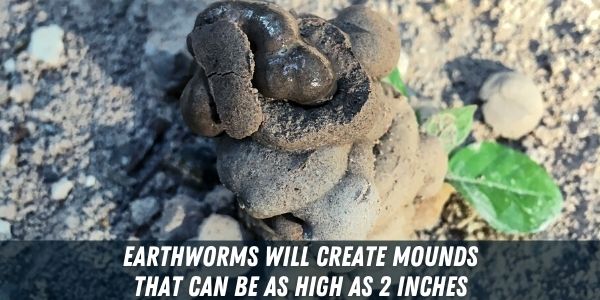
- Earthworms’ body is made of small, smooth-skinned segments,
- They are usually really pale as they dont have much coloration. They range from white to gray, and even pink.
- Earthworms are most active at night, and when the soil is moist. Seeing earthworms after periods of rain or watering is common.
Earthworms typically grow to about 14 inches, but in some species it can be much larger. Examples include, the largest one was 21 feet long.
Earthworms are found worldwide. They reside deep within the soil eating organic matter.
Earthworm Digging Behavior
- Earthworms will avoid coming outside during the day, unless it has rained. They come out at night in search of grubs.
- They slide through the soil very quickly due to their skin producing slimy mucus.
- When Earthworms eat the soil, they create earthworm castings which contain absurd amounts of fertilizer. This could burn the lawn, leaving discoloration,
Identifying Earthworm Holes & Infestation
- Small holes that contain worm mounds. Worm mounds are about 2 inches high, 1 inch wide. They will be directly near the hole.
- Seeing many, many worms come up while it is raining, this is a clear indicator.
- If you see grub-eating animals constantly nearby, this could also be a way to indicate an infestation.
Preventing Earthworms and keeping them from Digging Holes
While for a farmer earthworms may show that the soil is suitable and fertile, for a homeowner that has an overall healthy lawn, earthworms can damage it.
- Avoid watering your yard too much, watering your yard provides a fertile, easy soil for earthworms to glide through.
- Using electronic waves, vibrations through the ground. This will move the earthworms up to the surface, which will allow you to grab them.
- Do nothing, earthworms provide a great soil for your garden. While it may leave your yard looking bad, within days they will be gone and your soil will be more fertile.

